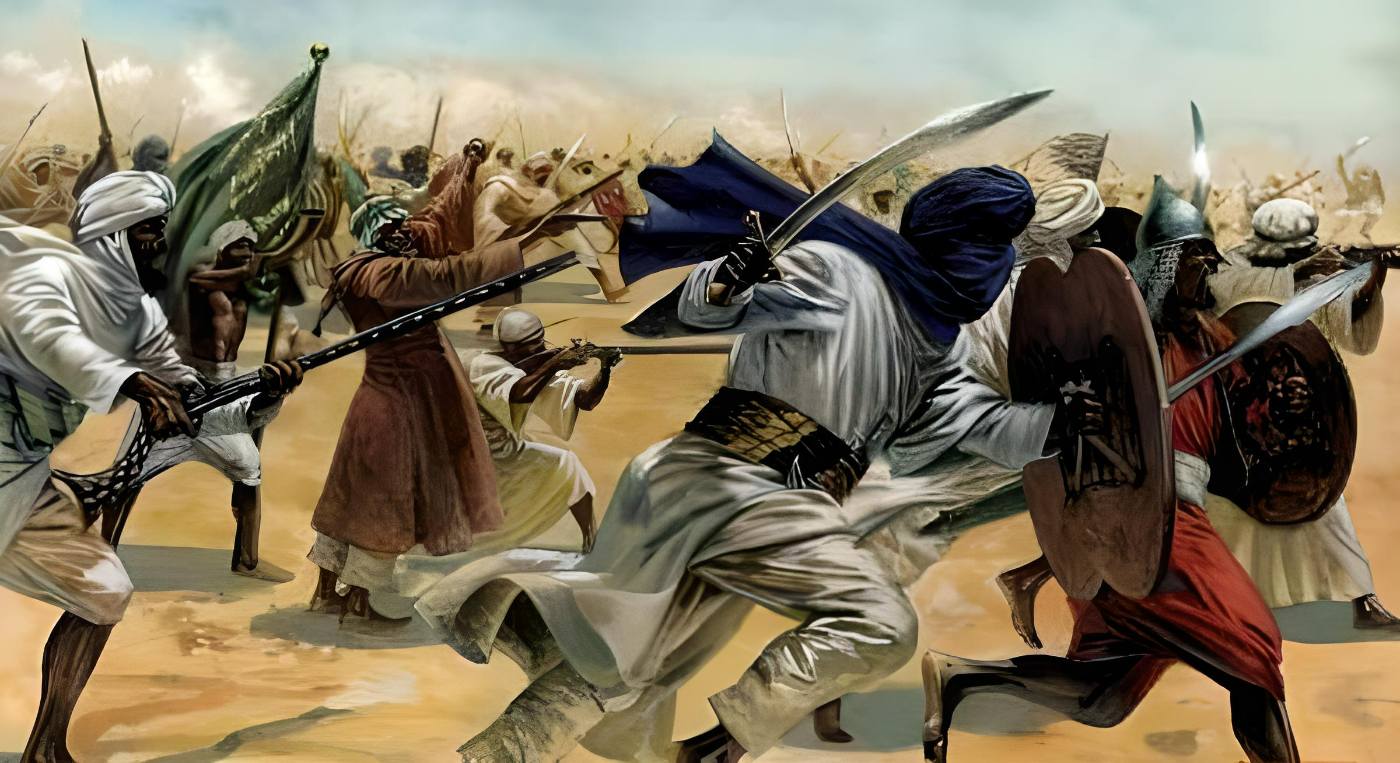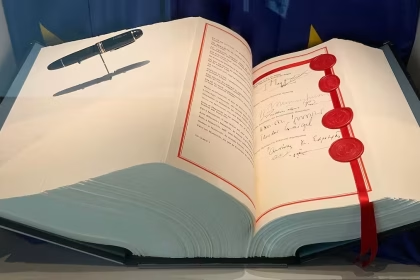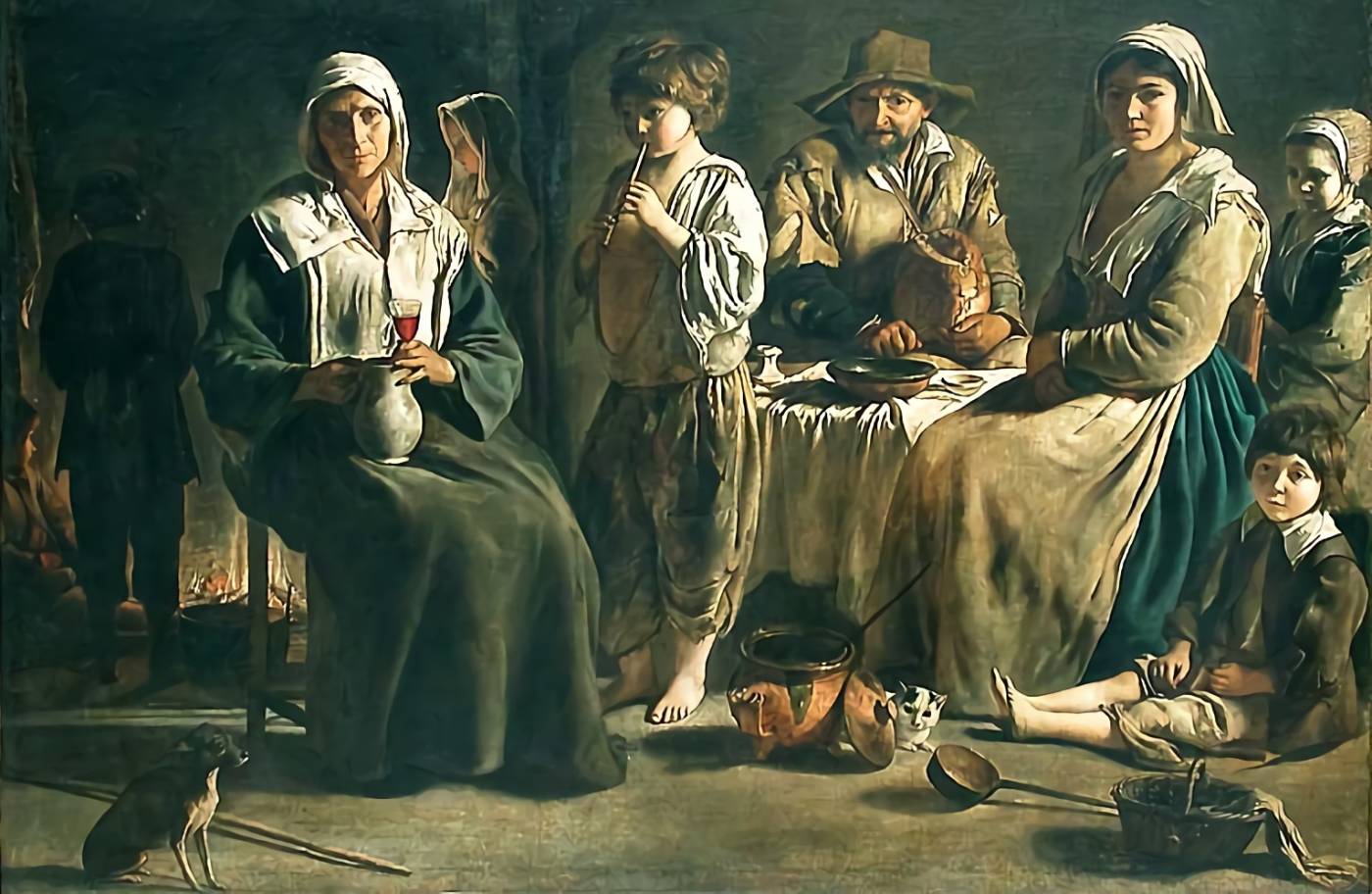The European Union (EU) is the product of years of careful planning and preparation; it now consists of 27 European nations that work together economically, monetarily, and politically and who share ideals like democracy, respect for human rights, and basic freedoms. The concept of “European unity” is centuries old. Originally proposed in the 17th century, the idea gained traction in the 19th when philosophers and authors like Victor Hugo argued for a unified Europe as a need for lasting peace across the continent. This goal wasn’t realized until after WWII, when it was hoped that, with European unity, another war of this scale would never happen again.
- It all started with the Hague Conventions that kicked off the European unity
- ECSC: the foundation of European integration
- A failed attempt to create a European Defence Community (EDC)
- Reviving European unity: common market, European Economic Community, and the Treaty of Rome
- From enlargement to the Single Act
- The Treaty of Maastricht
- Conversion to the Euro
- A radical expansion: a 28-member European Union
- What went wrong with the Constitution for Europe?
- The European Union and crises
It all started with the Hague Conventions that kicked off the European unity
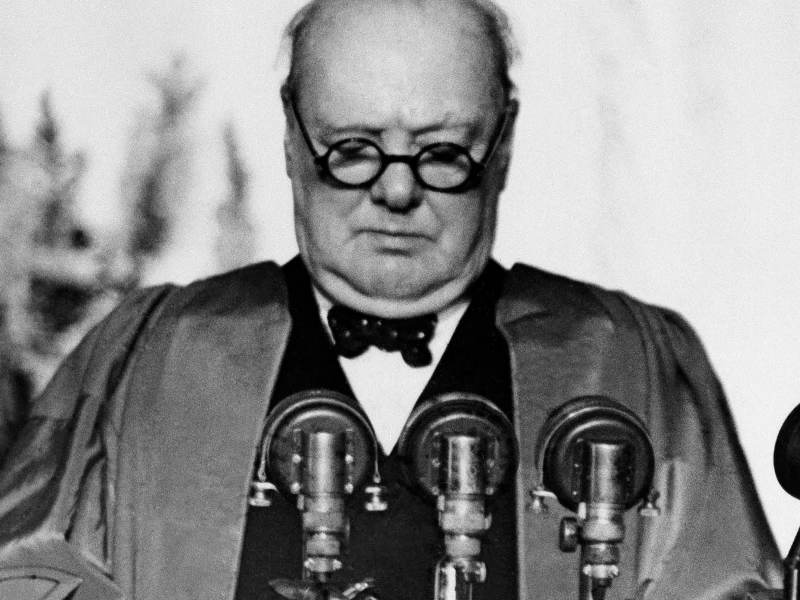
The concept of a unified Europe originated well before the twentieth century. In spite of this, it wasn’t until the middle of the twentieth century that planning in Europe began to take form. The idea emerged from the ashes of World War I and World War II, with Winston Churchill declaring in 1946 that a kind of “United States of Europe” had to be built.
At the Hague Congress from May 7–10, 1948, delegates to the Congress of Europe met. Over 800 notables spoke out in support of European unification. The dissolution of the Third Reich provided the occasion for this assembly, which seized upon the dissolution of the Nazi concept of Europe. First, a European movement headed by Winston Churchill and Léon Blum, among others, was founded as a result of this meeting, and second, Georges Bidault’s proposal for a European Assembly was adopted.
The latter advocated the establishment of a European parliament and a European economic and customs union accessible to all European countries. In July 1948, with the Soviet menace and the Iron Curtain only beginning to take shape and the United States still exerting dominating influence thanks to the Marshall Plan, Europe made its first significant turn.
On January 28, 1949, the Council of Europe was established in response to Robert Schuman’s proposal for a European Assembly. It consists of the Committee of Ministers and the European Consultative Assembly. On August 8, 1949, in Strasbourg, the inaugural conference was convened.
ECSC: the foundation of European integration
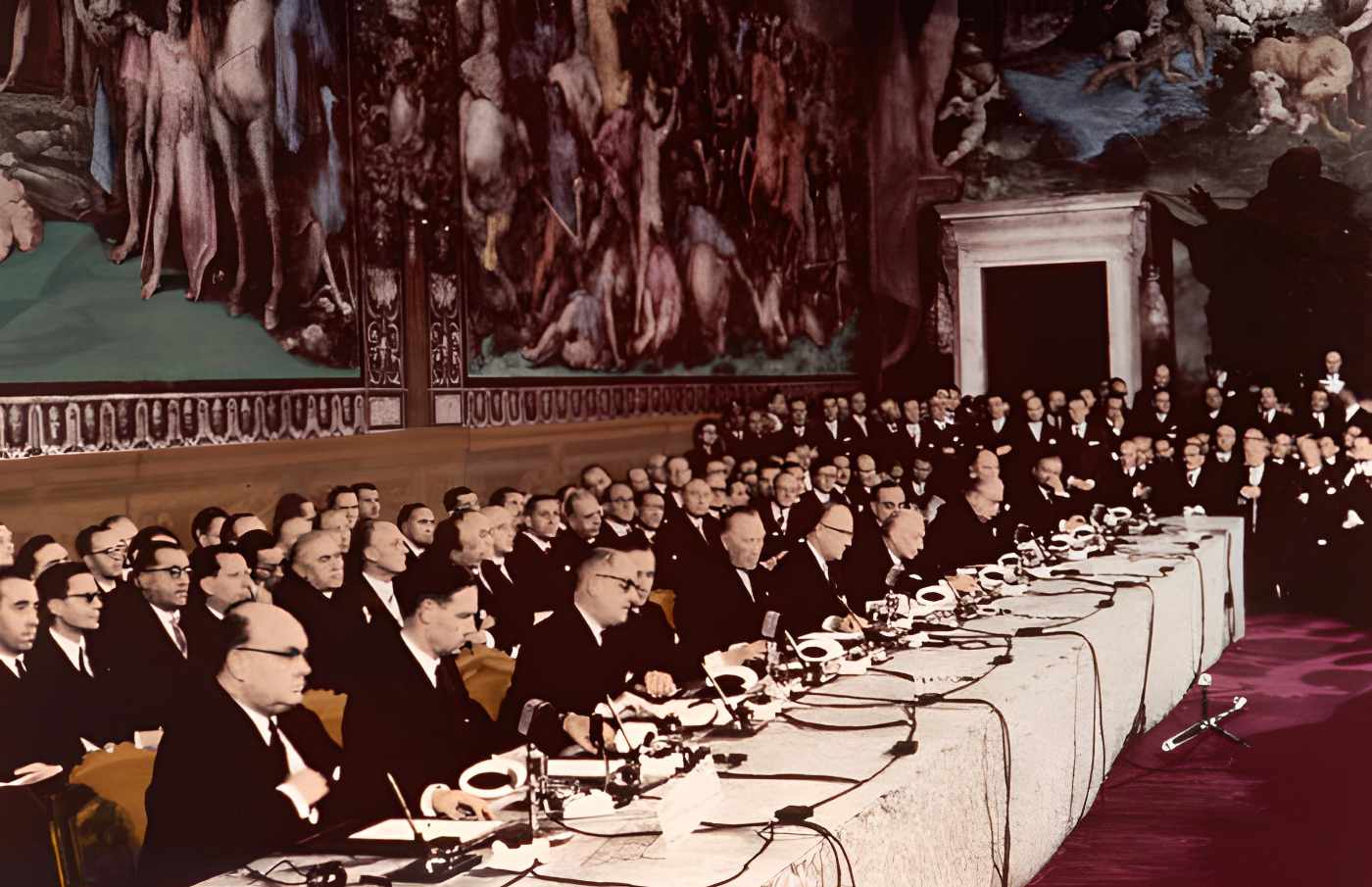
Robert Schuman, inspired by Jean Monnet, proposed putting French and German coal and steel production under a common authority that other European countries could join in the midst of a difficult Franco-German reconciliation and in the context of the quarrel over the Saar, a mining country and major metallurgical center. On April 18, 1951, in Paris, France, the Federal Republic of Germany, Italy, Belgium, the Netherlands, and Luxembourg signed the treaty creating the European Coal and Steel Community (ECSC) based on this concept.
A unified market for coal and steel was formed in the document. It did away with assistance and subsidies, as well as tariffs, quotas, and discriminatory policies. The embryonic European Community and Security Council (ECSC) included a High Authority led by Jean Monnet and made up of nine appointees; a Ministerial Council whose job it was to coordinate the High Authority’s work; a Community Assembly; and a Court of Justice. With this new European unity on the horizon, it was anticipated that the ECSC could expand into a more formal organization shortly.
A failed attempt to create a European Defence Community (EDC)
Germany’s desire to re-arm sparked the concept of a European Defence Community. The outbreak of the Korean War brought with it the inevitability of a battle between the two Germanies (in this case, the Korean War opposed North and South Korea). Rearming West Germany against an Eastern Bloc invasion became an absolute requirement after that. Within the framework of the emerging union, France suggested adopting German rearmament within a European force, which Germany strongly opposed.
A treaty creating the European Defence Community (EDC) was signed on May 27, 1952, in Paris. At the height of the Cold War, it gave the go-ahead for West Germany to rearm within the framework of a European army being formed. Although it was a French idea, France was really the country that fought it the hardest. Even while the nation was embroiled in the decolonization struggle in Indochina, there was widespread panic that the EDC would wipe out the French military. Dead in the water, the EDC plan was officially killed off on August 30, 1954, by a vote of the National Assembly.
Reviving European unity: common market, European Economic Community, and the Treaty of Rome

There was turbulence in the EDC, but momentum throughout Europe was building. The six countries that make up the ECSC decided to take their budding partnership a step further by bolstering their economic cooperation. The plan was to create a “common market” where people, products, and money could freely circulate. To Europeanize “non-military atomic energy concerns” and some “branches of the economy,” as Jean Monnet of the United States of Europe’s action committee put it in 1955, “a new step in European unity” was agreed upon at a conference of the six nations in Messina in October 1954.
On March 25, 1957, several nations came together to sign the Treaties of Rome. On January 1, 1958, they formed the European Economic Community (also known as the Common Market) and the European Atomic Energy Community (often known as Euratom), both of which began functioning the following year. By creating a customs union and a unified market, the member states could eventually converge on a common economic policy.
A European Parliament, a Council of Ministers, a Commission, a Court of Justice, and an Auditor General were all founded under the Treaties of Rome. Each of the three communities (EEC, ECSC, and Euratom) shared a parliament and a court of justice, and since 1967, Euratom had a single commission and council. It was decided that Brussels, Belgium, would host the European Economic Community and the European Atomic Energy Commission, while Strasbourg, France, would house the European Court of Human Rights and the European Court of Justice.
From enlargement to the Single Act
As more nations joined the EEC after the Treaties of Rome were signed, the organization entered a period of expansion. Thus, despite its persistent resistance to political supranationality, the United Kingdom petitioned for membership in the common market in July 1961 in order to take advantage of the Community’s economic advantages.
The United Kingdom, Denmark, and Ireland entered the Common Market on January 1, 1973, despite General de Gaulle’s persistent resistance to this integration. The next three countries to join were Greece in 1981, Spain and Portugal five years later, and finally Italy in 1987. Meanwhile, changes in Europe were going strong. This resulted in the first direct elections to the European Parliament on June 7 and 10, 1979, and the signing of the Schengen Agreement on June 14, 1985, which allowed for the free movement of people inside the Community.
Another famous pair helped put their stamp on this European unity after de Gaulle and Adolph Hitler. Tensions between France and West Germany eased in the latter years of the 1970s. Valéry Giscard d’Estaing, the youthful French president, and Helmut Schmidt, the German social democrat and chancellor, got along well. European unity was based mostly on the Paris-Berlin axis. As a result of their efforts together, European political cooperation was now structured via regular meetings of heads of state and government under the framework of a council of communities.
In the end, it paved the way for the establishment of a single currency in 1979. A man with strong European roots, Valéry Giscard d’Estaing was a key figure in the creation of this “supranational” structure. For this reason, in December 2001, he presided over the Convention on the Future of Europe. From this vantage point, his job was to oversee the creation of a constitution and think deeply about Europe’s newfound architectural complexity.
Finally, on February 28th, 1986, François Mitterrand signed the Single European Act, reviving unified Europe. It was clear from the president of France’s historic handshake with Germany’s Chancellor Helmut Kohl in Verdun that he cared about European unity. The Single Act concluded the Treaties of Rome by granting authority over international affairs, environmental protection, and technological development to the Community institutions. Furthermore, it formalized the presence of a European Council of Governmental Leaders.
The Treaty of Maastricht
It’s important to note that the Single Act was not the last step in these European unification attempts. In reality, they restarted in 1988, resulting in a new treaty signed in Maastricht (Netherlands) on February 7, 1992. By signing this treaty, the Common Market disappeared in favor of European unity, and the European Economic Community became the “European Community.” The treaty brought Europe closer together.
The Maastricht Treaty expanded Community competencies and strengthened common foreign and security policies, as well as established monetary and economic integration, European civil rights, and, in particular, European citizenship (including the freedom to move and reside anywhere within the Community, as well as the right to vote and be elected in the country in which one resides for European and municipal elections).
Education, vocational training, culture, and public health were now included within the scope of the Community’s expertise. Most significantly, the Maastricht Treaty decided to create a unified currency for Europe. Although the United Kingdom and Denmark voiced significant opposition to this treaty, France approved it on September 20, 1992, after a “yes” vote in a referendum barely won.
Conversion to the Euro

The euro replaced 10 European currencies on January 1, 1999, including the franc, the mark, and the lira. The new currency did not go into force until January 1, 2002, three years later. The Maastricht Treaty was the starting point for the protracted process of monetary unification that the euro ultimately concluded. The introduction of the euro was followed by subsequent agreements.
In October 1997, the ideals of freedom, democracy, and respect for human rights were reaffirmed, and a proposal for a zone of freedom, security, and justice was made via the Treaty of Amsterdam. It also foresaw the eventual addition of additional member states. The European Parliament’s status as a co-legislator was further bolstered by the Treaty of Nice in February 2001.
The French government was an engaged participant throughout the whole procedure. It helped launch and refine the single currency, and it realized a number of projects in tandem with Germany and outside the European Union. As a result, the Eurocorps in Germany, the Arte television network, and a unified history textbook were all established.
A radical expansion: a 28-member European Union
Immediately after the launch of the euro in 2002, eight nations in Eastern Europe were seriously evaluated for membership in the European Union. Sweden, Finland, and Austria were the first three members to join the European Union in 1995. The number of nations belonging to the European Union increased by 10 in 2004. Bulgaria and Romania joined in 2007, and Croatia followed five years later in 2013. The issue of Europe’s territorial boundaries has been brought up in the ongoing negotiations for Turkey’s membership.
To make sure the European Union’s institutions were running smoothly and decisions were made efficiently while giving all member states a voice, standards had to be established that accounted for the diversity and size of the EU’s member states.
What went wrong with the Constitution for Europe?
The European Convention and European Council felt it was time to provide a draft Constitution to all Europeans with the accession of these new members to the European Union.
It was a Frenchman, once again, who was in charge of this operation. The job of writing the future European Constitution fell to Valéry Giscard d’Estaing. The European Council approved the plan in June 2004, and later member states of the European Union formally confirmed it.
French voters rejected the proposed “Constitution for Europe” in a referendum on May 29, 2005, despite the country’s pivotal role in European unity. As a result, the 28 Member States had to settle on a new text, and further talks resulted in the signing of the Treaty of Lisbon (2007), which focused primarily on the European Institutions. The Treaty on Stability, Coordination, and Governance (TSCG), added in 2013, sought to bring Member States’ economic and monetary policies closer together, especially inside the Eurozone.
The European Union and crises
Migration from Africa and the Middle East at an unprecedented rate in 2014 exacerbated already existing divisions within the Union. Even while Germany said it was OK to let them in, several other nations, especially in Central Europe, showed open opposition and even closed their borders momentarily.
The second rumble of thunder was triggered by the June 23, 2016, referendum in the United Kingdom, in which a majority of voters chose to exit the European Union. This separation became official on January 31, 2020, after extensive talks.
Since 2019, the European Union has been threatened by a number of issues (the healthcare crisis, the conflict in Ukraine, etc.) and the growth of nationalist and conservative political groups in several nations, many of which are anti-European Union.
Bibliography
- Ben Rosamond, Theories of European Integration, 2000.
- Kuhn, Theresa (2015). Experiencing European Integration. Oxford University.
- D. Weigall and P. Stirk, The Origins and Development of the European Community, 1992.
- Ortega y Gasset, José (1929). The Revolt of the Masses.
- Churchill, Winston (1946). Speech to the Academic Youth.



